Global Market Comments
July 21, 2023
Fiat Lux
Featured Trades:
(WHAT THE NEXT RECESSION WILL LOOK LIKE),
(FB), (AAPL), (NFLX), (GOOGL), (KSS), (VIX), (MS), (GS),
(TESTIMONIAL)

CLICK HERE to download today's position sheet.
Global Market Comments
July 21, 2023
Fiat Lux
Featured Trades:
(WHAT THE NEXT RECESSION WILL LOOK LIKE),
(FB), (AAPL), (NFLX), (GOOGL), (KSS), (VIX), (MS), (GS),
(TESTIMONIAL)

CLICK HERE to download today's position sheet.
The probability of a recession taking place over the next 12 months is now low ranging as high as 20%. If it reaccelerates, not an impossibility, you can take that up to 100%.
And here’s the scary part. Bear markets front-run recessions by 6-12 months, i.e. now.
We’ll get a better read on the inflation numbers over the coming months. If inflation turns hot again, the Fed will be forced to raise rates to once unimagined levels.
So, it’s time to start asking the question of what the next recession will look like. Are we in for another 2008-2009 meltdown, when friends and relatives lost homes, jobs, and their entire net worth? Or can we look forward to a mild pullback that only economists and data junkies like myself will notice?
I’ll paraphrase one of my favorite Russian authors, Fyodor Dostoevsky, who in Anna Karenina might have said, “All economic expansions are all alike, while recessions are all miserable in their own way.”
Let’s look at some major pillars of the economy. A hallmark of the 2008 recession was the near collapse of the financial system, where the ATMs were probably within a week of shutting down nationally. The government had to step in with the TARP, and mandatory 5% equity ownership in the country’s 20 largest banks.
Back then, banks were leveraged 40:1 in the case of Morgan Stanley (MS) and Goldman Sachs (GS), while Lehman Brothers and Bear Stearns were leveraged 100:1. In that case the most heavily borrowed companies only needed markets to move 1% against them to wipe out their entire capital. That is exactly what happened. (MS) and (GS) came within a hair’s breadth of going the same way.
Thanks to the Dodd Frank financial regulation bill, banks cannot leverage themselves more than 10:1. They have spent a decade rebuilding balance sheets and reserves. They are now among the healthiest in the world, having become low-margin, very low-risk utilities. It is now European and Chinese banks that are going down the tubes.
How about real estate, another major cause of angst in the last recession? The market couldn’t be any more different today. There is a structural shortage of housing, especially at entry level affordable prices. While liar loans and house flipping are starting to make a comeback, they are nowhere near as prevalent as a decade ago. And the mis-rating of mortgage-backed securities from single “C” to triple “A” is now a distant memory. (I still can’t believe no one ever went to jail for that!).
And interest rates? We went into the last recession with a 6% overnight rate and a 7% 30-year fixed rate mortgage. Here we are once again.
The auto industry has been in a mild recession for the past two years, with annual production stalling at 15 million units, versus a 2009 low of 9 million units. In any, case the challenges to the industry are now more structural than cyclical, with new buyers decamping en masse to electric vehicles made on the west coast.
Of far greater concern are industries that are already in recession now. Energy has been flagging since oil prices peaked 18 months ago, despite massive tax subsidies. It is suffering from a structural oversupply and falling demand.
Retailers have been in a Great Depression for five years, squeezed on one side by Amazon and the other by China. A decade into store closings and the US is STILL over-stored. However, many of these shares are already so close to zero that the marginal impact on the major indexes will be small.
Financials and legacy banks are also facing a double squeeze from Fintech innovation and collapsing interest rates. All of those expensive national networks with branches on every street corner will be gone later in the 2020s.
And no matter how bad the coming recession gets technology, now 30% of the S&P 500, will keep powering on. Combined revenues of the “Magnificent Seven” in Q1 are at records. That leaves a mighty big cushion for any slowdown. That’s a lot more than the “eyeballs” and market shares they possessed a decade ago.
So, netting all this out, how bad will the next recession be? Not bad at all. I’m looking at a couple of quarters' small negative numbers, like two back-to-back -0.1%’s. Then we’ll see a recovery and probably another decade of decent US growth.
The stock market, however, is another kettle of fish. While the economy may slow from a 2.2% annual rate to -0.1% or -0.2%, the major indexes could fall much more than that, say 30% to 40%.
Earnings multiples are still at a 19X high compared to a 9X low in 2009. Shares would have to drop 53% just to match the last low. Equity weightings in portfolios are low. Money is pouring out of stock funds into bond ones.
Corporations buying back their own shares have been the principal prop from the market for the past three years. Some large companies, like Kohls (KSS), have retired as much as 50% of their outstanding equity in ten years.
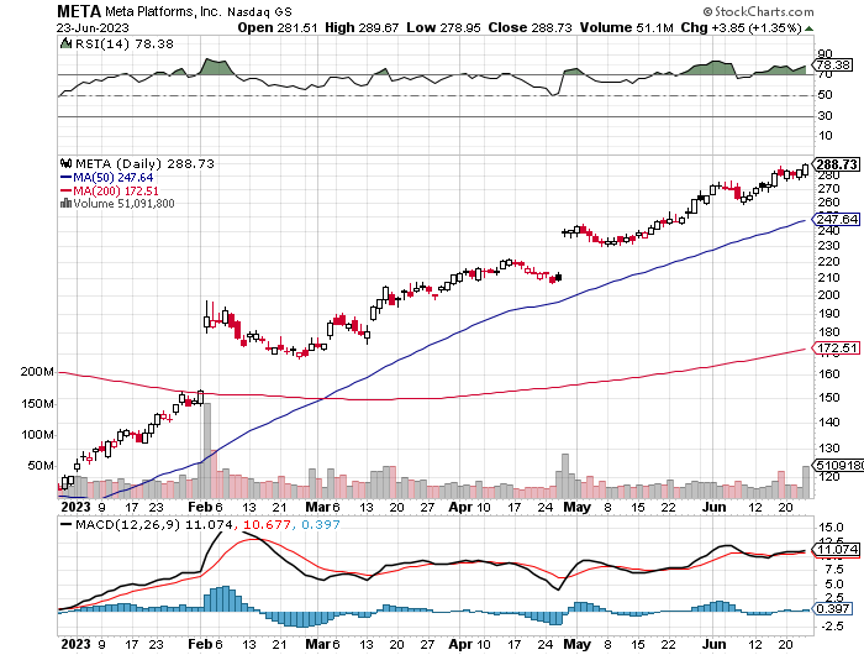
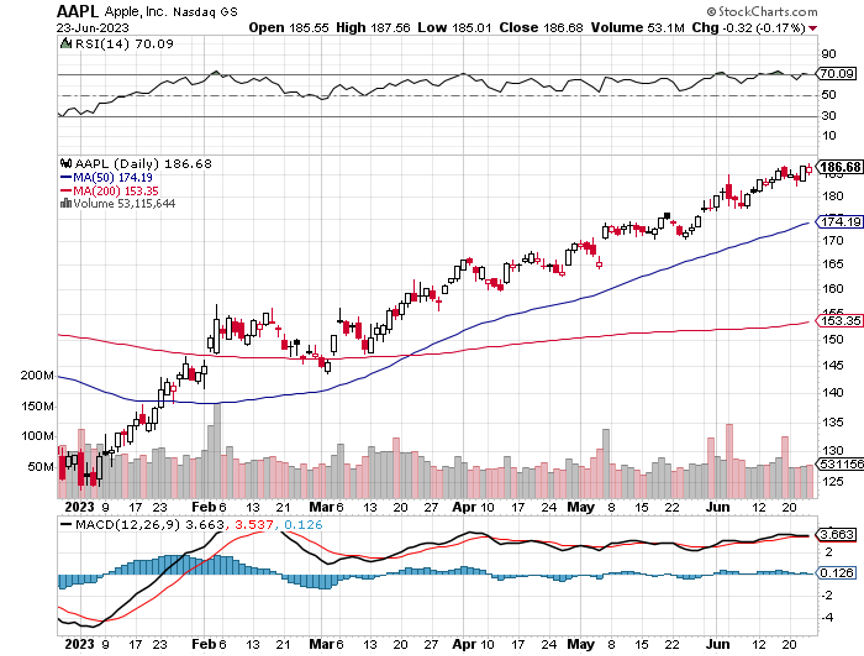
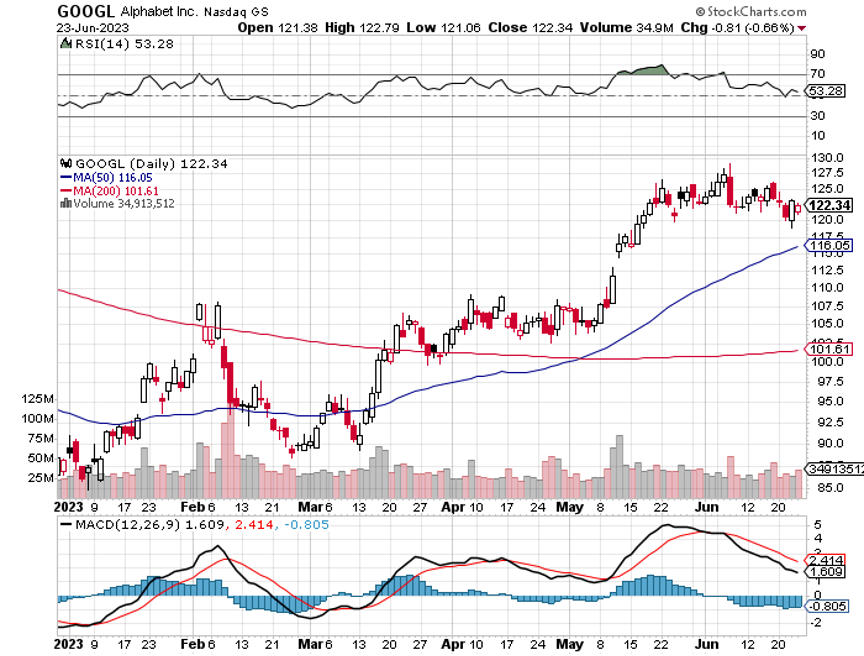
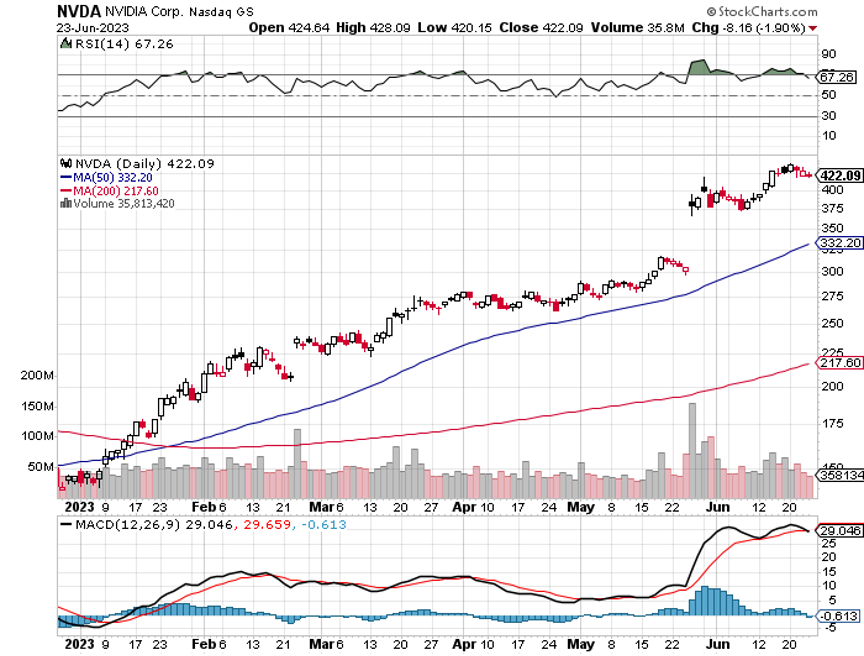

Global Market Comments
July 12, 2023
Fiat Lux
Featured Trades:
(WHAT THE NEXT RECESSION WILL LOOK LIKE),
(FB), (AAPL), (NFLX), (GOOGL), (KSS), (VIX), (MS), (GS),
(TESTIMONIAL)

CLICK HERE to download today's position sheet.
Global Market Comments
August 22, 2019
Fiat Lux
Featured Trade:
(WHAT THE NEXT RECESSION WILL LOOK LIKE),
(FB), (AAPL), (NFLX), (GOOGL), (KSS), (VIX), (MS), (GS),
(TESTIMONIAL)

At our weekly Monday staff meeting, coworkers were griping and grimacing about their failed internet connections and annoying glitches to their favorite e-commerce sites during the mad rush to find the best deal during Black Friday and Cyber Monday.
Internet traffic was that torrential when sites were driven offline for minutes and some, hours by a bombardment of gleeful shoppers hoping to splash their credit card numbers all over the web on sweet discounts.
The crashing of system servers epitomizes the robust transition to online commerce that has most of us pinned to our devices surfing our go-to platforms all day long.
According to data from Adobe (ADBE) analytics, Black Friday sales jumped 23.6% YOY to $6.22 billion, and it was the first time in history that mobile sales broke the $2 billion threshold.
It is a clear victory for e-commerce and, in particular, mobile shopping that has become more integrated into modern tech DNA.
Mobile sales comprised 33.5% of total sales and were up from 29.1% last year, signaling that more is yet to come from this transcending movement that is shoving everything from content, digital ads, entertainment, banking and pretty much everything you can think of to your handheld smartphone.
CEO of Kohl’s (KSS) Michelle Gass confirmed the e-commerce strength by saying, “80 percent of traffic online came from mobile devices.”
The beauty of this movement is that it’s not an “Amazon (AMZN) takes all” scenario with other players allowed to feast on a growing size of the e-commerce pie.
“Click and collect” has been a strategy that has paid off handsomely with sales up 73% YOY during the shopping holidays.
This all supports my prior claim that e-commerce is one of the most innovative and dynamic parts of technology especially the grocery space, and the buckets full of capital attempting to reconfigure the e-commerce spectrum is creating an enhanced customer experience for the final buyer resulting in better products, superior delivery methods, and cheaper prices.
Some other retailers spicing up their e-commerce strategy are dinosaur big-box retailer’s intent to defend their business from the Amazon death star.
If you can’t innovate in-house, then “borrow” the innovation from somewhere else.
That is exactly what Target (TGT) has chosen to do announcing last week that it would grant free 2-day shipping with no minimum sale threshold.
The tactic is bent on undercutting Walmart (WMT) who currently operate a 2-day free shipping policy with a minimum order of $35.
Most shoppers will buy in bulk easily eclipsing the $35 per order mark minimizing the rot of small orders.
And if they aren’t eclipsing the $35 per order mark, it demonstrates the firm’s offerings lack the diversity and quality to compete with Amazon.
Capturing the incremental sale squarely rests on the e-tailers ability to coax out the buyers’ impulses to move on the can’t-miss items.
The lesser known retailers fail miserably at matching the lineup of products that Amazon can roll out.
The bountiful product selection at Amazon leads customers to pay for 3, 4, 5, 6 or more items on Amazon.com.
That said, I am bullish on Walmart’s e-commerce strategy. The “click and collect” strategy has shown to be an outsized winner increasing industry sales of this type 120% YOY.
Walmart is at the center of this strategy and they are refurbishing their supercenters to accommodate this growth in collecting from the curb.
Effectively, this gives customers the option to skip the queue instead of bracing the hoards and navigating the crowds of shoppers in the supercenter.
Other changes are minor but will help, such as offering online product location maps to customers beforehand and allowing customers to pay for large items like big-screen televisions on the spot.
The biggest windfall is derived from the cataclysmic demise of Toy “R” Us, giving Walmart a new foothold into the toy business.
Walmart is beefing up toy items by 40% in the stores and layering that addition with another 30% increase in their e-commerce division.
Adobe’s upper management recently said in an interview that interactive toys have been a wildly popular theme this year amid a backdrop of the best holiday shopping season ever recorded.
Another attractive gift selling like hotcakes are video games, titles boding well for sales at Activision (ATVI), EA Sport (EA), and Take-Two Interactive (TTWO).
Reliant IT infrastructure will be a key component to executing these holiday sales bonanzas.
Clothing retailer J. Crew and home improvement chain Lowe's (LOW) were grappling with sudden disruptions to their IT systems before they managed to get back online.
More than 75 million shoppers parade the internet to shop during Black Friday and Cyber Monday, and the opportunity cost swallowed to a tech glitch is a CEO’s worst nightmare.
Ultimately, what does this all mean?
Focusing on the positive side of the surging holiday sales is the right thing to do because the avalanche of momentum will have a knock-on effect on the rest of the economy.
Certain companies are positioned to harvest the benefits more than others.
Amazon guided its 4th quarter estimates conservatively and is in-line to beat top and bottom line forecasts.
Other pockets of strength are Walmart’s tech pivot, albeit from a low base. Walmart still has more room to maneuver and they are in the 2nd inning of their tech transformation snatching the low-hanging fruit for now.
Another interesting e-commerce company swinging its elbows around is Etsy (ETSY).
They sell vintage and handmade craft adding the personalized touch that Amazon can’t destroy.
Margins will be higher than the typical low-cost, value e-commerce platform, but scaling this type of business will be more difficult.
Sales grew 41% sequentially and just in time for a winter holiday blowout.
Etsy became profitable in 2017 after three straight loss-making years, and 2018 is poised to become its best year ever.
The profitability bug is hitting Etsy at the perfect time with its EPS growth rate up 36% sequentially.
They report at the end of February and I expect them to smash all estimates.
There are some deep ramifications for the long term of e-commerce that is beginning to suss itself out.
For one, shipping times will continue to be slashed with a machete. If you are enjoying the 2-day free shipping from Amazon and Target now, then wait until 2-day becomes 1-day free shipping.
Then after 1-day free shipping, customers will get 10-hour shipping, and this won’t stop until goods are shipped to the customer’s door in less than 1-hour or less.
This is what the massive $50 billion in logistical investments over the next five years by the likes of Uber and Amazon are telling us.
It will take years for the efficiencies to come to fruition, but it is certainly in the works.
In the next five years, America’s logistics infrastructure will have to accommodate the doubling of e-commerce packages from 2 billion to 4 billion per year.
Another trend is that omnichannel offerings are sticking and won’t go away anytime soon.
It was once premised that online sales would destroy brick and mortar, yet moving forward, a mix of different sales channels will be the most efficient way of moving goods in the future.
Pop-up stores have been an intriguing phenomenon of late, and surprisingly, 60% of consumers still require interaction with the product to be convinced it's worthy of buying.
Certain products such as fashionable dresses and designer shoes must be given a whirl before a decision can be made. This won’t change anytime soon.
The timing of the sales and marketing push has been moved forward as competitors are eager to get a jump on one another.
Management is agnostic to the timing of the sale.
Thus, discounted sales will show up a week before Thanksgiving as pre-Thanksgiving sales in the future elongating the holiday shopping season cycle by starting it early and delaying the finish of it.
Lastly, the record numbers prove that the e-commerce renaissance and the pivot to mobile is not just a flash in the plan.
What does this mean for tech equities?
The temporal tech sell-off of late is largely a result of outside macro forces and is not indicative of the overall health of the tech sector that has experienced record earnings.
If the markets can keep its head above the February lows, it sets up an intriguing December fueled by Americans flashing their digital wallets on online platforms.
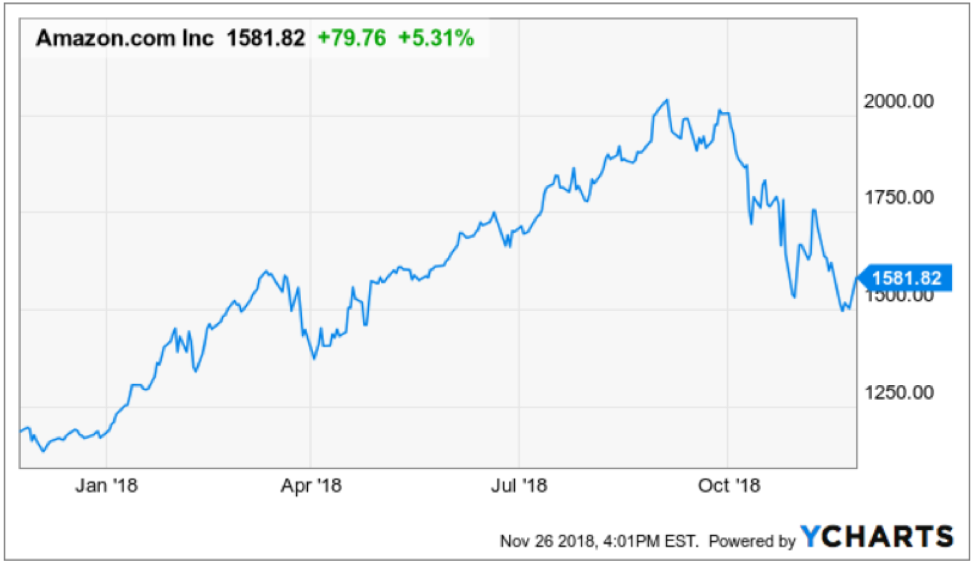
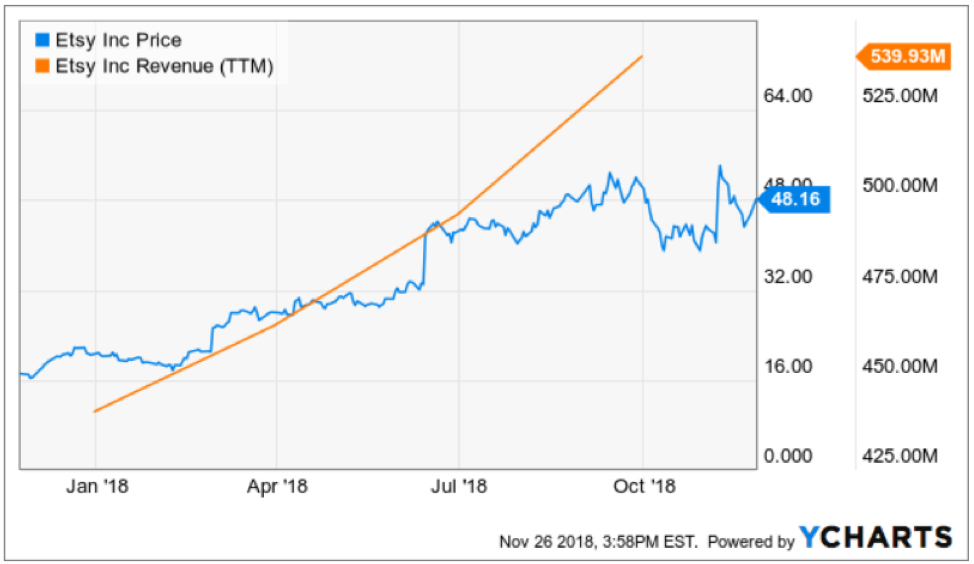
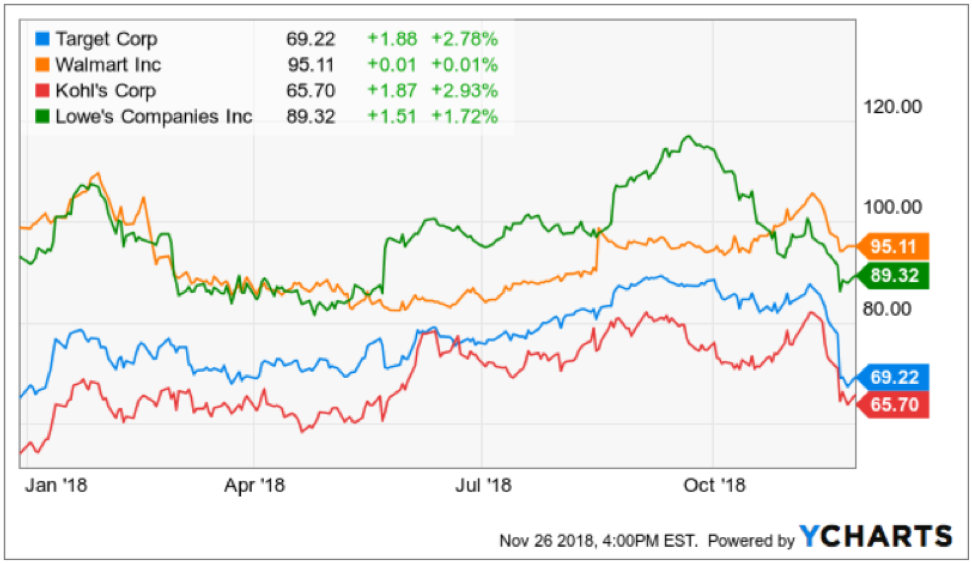
Legal Disclaimer
There is a very high degree of risk involved in trading. Past results are not indicative of future returns. MadHedgeFundTrader.com and all individuals affiliated with this site assume no responsibilities for your trading and investment results. The indicators, strategies, columns, articles and all other features are for educational purposes only and should not be construed as investment advice. Information for futures trading observations are obtained from sources believed to be reliable, but we do not warrant its completeness or accuracy, or warrant any results from the use of the information. Your use of the trading observations is entirely at your own risk and it is your sole responsibility to evaluate the accuracy, completeness and usefulness of the information. You must assess the risk of any trade with your broker and make your own independent decisions regarding any securities mentioned herein. Affiliates of MadHedgeFundTrader.com may have a position or effect transactions in the securities described herein (or options thereon) and/or otherwise employ trading strategies that may be consistent or inconsistent with the provided strategies.
This site uses cookies. By continuing to browse the site, you are agreeing to our use of cookies.
OKLearn moreWe may request cookies to be set on your device. We use cookies to let us know when you visit our websites, how you interact with us, to enrich your user experience, and to customize your relationship with our website.
Click on the different category headings to find out more. You can also change some of your preferences. Note that blocking some types of cookies may impact your experience on our websites and the services we are able to offer.
These cookies are strictly necessary to provide you with services available through our website and to use some of its features.
Because these cookies are strictly necessary to deliver the website, refuseing them will have impact how our site functions. You always can block or delete cookies by changing your browser settings and force blocking all cookies on this website. But this will always prompt you to accept/refuse cookies when revisiting our site.
We fully respect if you want to refuse cookies but to avoid asking you again and again kindly allow us to store a cookie for that. You are free to opt out any time or opt in for other cookies to get a better experience. If you refuse cookies we will remove all set cookies in our domain.
We provide you with a list of stored cookies on your computer in our domain so you can check what we stored. Due to security reasons we are not able to show or modify cookies from other domains. You can check these in your browser security settings.
These cookies collect information that is used either in aggregate form to help us understand how our website is being used or how effective our marketing campaigns are, or to help us customize our website and application for you in order to enhance your experience.
If you do not want that we track your visist to our site you can disable tracking in your browser here:
We also use different external services like Google Webfonts, Google Maps, and external Video providers. Since these providers may collect personal data like your IP address we allow you to block them here. Please be aware that this might heavily reduce the functionality and appearance of our site. Changes will take effect once you reload the page.
Google Webfont Settings:
Google Map Settings:
Vimeo and Youtube video embeds:
